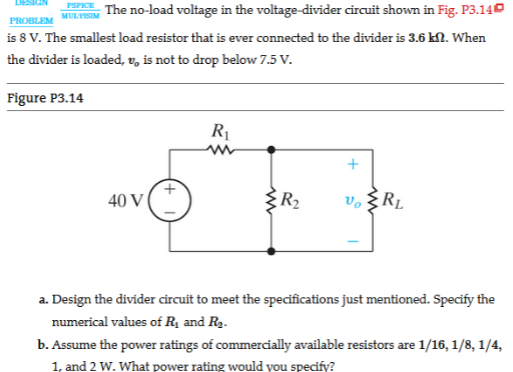R1 40 V R2 v. RL a. Design the divider circuit to meet the specifications just mentioned. Specify the numerical values of R, and R2. b. Assume the power ratings of commercially available resistors are 1/16, 1/8, 1/4, 1. and 2 W. What power rating would vou specifv?
Protection System
A system that protects electrical systems from faults by isolating the problematic part from the remainder of the system, preventing power from being cut from healthy elements, improving system dependability and efficiency is the protection system. Protection devices are the equipment that are utilized to implement the protection system.
Predictive Maintenance System
Predictive maintenance technologies are designed to assist in determining the state of in-service equipment so that maintenance can be scheduled. Predictive maintenance is the application of information; proactive maintenance approaches examine the condition of equipment and anticipate when it should maintain. The purpose of predictive maintenance is to forecast when equipment will fail (depending on a variety of parameters), then prevent the failure through routine and corrective maintenance.Condition monitoring is the continual monitoring of machines during process conditions to maintain optimal machine use, which is necessary for predictive maintenance. There are three types of condition monitoring: online, periodic, and remote. Finally, remote condition monitoring allows the equipment observed from a small place and data supplied for analysis.
Preventive Maintenance System
To maintain the equipment and materials on a regular basis in order to maintain those running conditions and reduce unnecessary shutdowns due to unexpected equipment failure is called Preventive Maintenance (PM).

A voltage divider can be used to scale down an extremely high voltage so that a voltmeter can read it. The divider output, which outputs a lower voltage that is within the meter's input range, is detected by the meter after the high voltage is placed across it. The voltage across any resistor in a series connection of resistors must be equal to the resistor's value divided by the circuit's equivalent resistance. This is referred to as the Voltage Division Rule.
Trending now
This is a popular solution!
Step by step
Solved in 3 steps with 2 images









